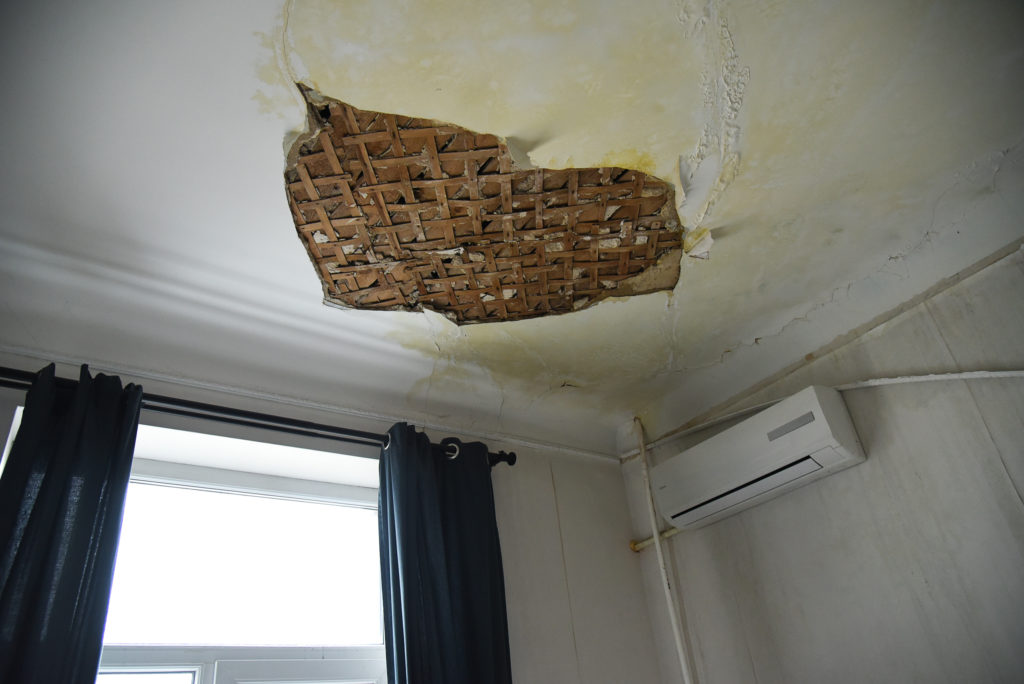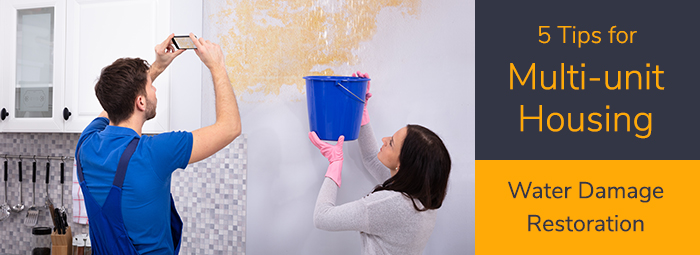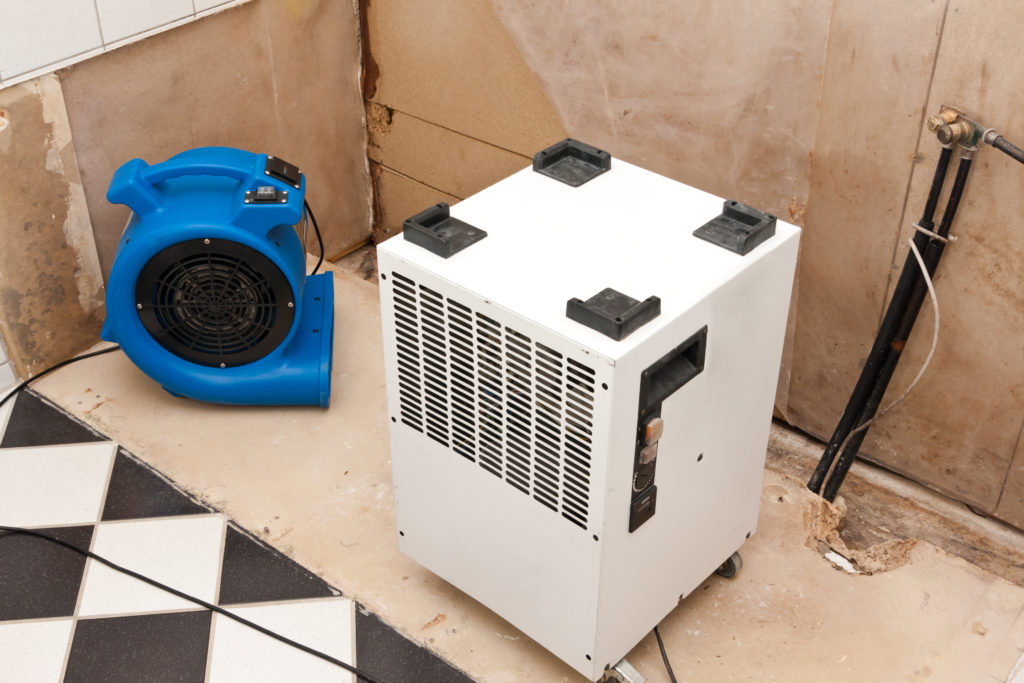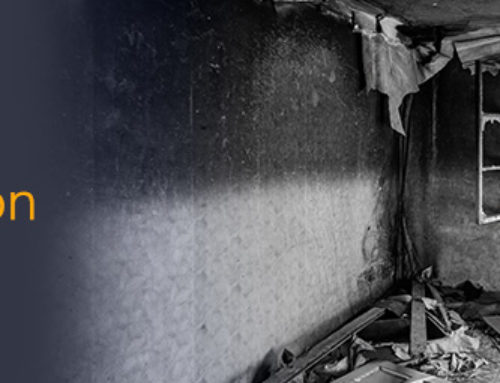When multi-unit housing is damaged by water, it can result in a lot of costly damage to fix, especially if the moisture is not properly addressed. At Summit Reconstruction & Restoration, our priority is always to prevent future issues in addition to repairing the damage. We will find the source of your problem, fix it, and prevent it from ever occurring again in the same location. Continue reading to get tips and advice on water restoration in multi-unit housing.
What is water restoration?
Water restoration is the process of repairing water damage, whether that damage is rotting wood, organic growth, rust, swelling, or delamination. The goal of water restoration focuses on returning the state of a building to its original condition and working order before the damage occurred. Some of the most common repairs completed in a water damage restoration job include:
- Replacing insulation, roofing, siding, windows, and doors
- Repairing or replacing electrical, mechanical, or plumbing systems
- Patching of cosmetic defects such as cracks and holes in drywall or plaster
- Repairing or replacing structural components such as stairways, decks, landings, and balconies
- Redecoration such as painting or refinishing a floor to match its original material and color
- Replacing or repairing cabinets, flooring, countertops, and other interior carpentry
Multi-unit Water Damage Problems to Consider
Multi-unit housing poses the problem of isolating the water damage to one section of the building, and mitigating the effect it has on surrounding residents. Usually, a multi-unit solution requires the contractor to:
- Shut off water or electricity to multiple units to complete repairs
- Identify, isolate, and repair leaks and damage to surrounding units
- Identify, isolate and remediate mold
The last issue can be one of the trickiest problems that occur with water damage in multi-unit housing. Water can seep into walls, upholstery, carpeting, and many other nooks and crannies. It may seem dry, but if it is not cleaned properly by professionals it can become a breeding ground for organic growth. Organic growth is a toxic substance that grows on organic materials like insulation, sub-flooring, carpet, drywall, and upholstery. It thrives in moist, dark conditions, which is why standing water that’s left to dry in carpets, drywall and insulation is particularly dangerous. As it develops, it can release spores into the air, where it gets inhaled and ingested by inhabitants.
Even materials that weren’t damaged by water can become contaminated by organic growth, which can continue to spread and cause inhabitants to become ill. Exposure to organic growth can cause respiratory distress such as coughing and wheezing, and skin irritation such as rash and itching. Children and people with preexisting conditions are at a greater risk of complications from exposure to organic growth. The health risks associated with organic growth are why isolating and mitigating the spread is a top priority when water damage occurs in multi-unit housing. This commonly includes removing moldy and surrounding porous materials, and cleaning and sanitizing surrounding areas and personal belongings like furniture and clothing.
Tips for Water Damage Restoration in Multi-Unit Housing
The priority when water damage occurs in multi-unit housing is mitigating the effects on other units. This means identifying the problem, and acting quickly and decisively to stop the damage from spreading.
- Know Your Water
One of the first questions to ask in the event of water damage is where did the water come from. This is important to prevent further damage, but also to identify how to properly restore it. The source of water determines some of the measures taken when cleaning it up. When it comes to water damage and water restoration, there are three types of water to be aware of:
Clean Water
Don’t confuse clean water with potable water. Usually, this is water from rain, condensation, leaky pipes, etc. It’s relatively harmless with low chances of hazardous contaminants that pose health risks.
Gray Water
Gray water can be thought of as slightly dirty water. It’s usually water from dishwashers, washing machines, clean toilets, and so on, which can be assumed to have some contaminants, but is not considered a serious health risk.
Black Water
The third and final type is black water, such as sewage or flooding from nearby rivers as a result of excessive rainfall or natural disaster. This water contains waste, bacteria and other serious contaminants. Black water can cause very serious health problems, so you should avoid coming into contact with it, instead let the professionals clean and remove all materials that come into contact with it.

2. Prioritize Ceiling Repair
Ceilings exposed to water damage are at more risk of structural damage and collapse, due to the effects of gravity. This is especially true in multi-story buildings, where one tenant’s floor is another tenant’s ceiling. This means that flooding and water damage on the upper stories pose risk to the units below them. You don’t want them sagging or collapsing and causing further damage.
3. Remove & Replace Porous Materials
Porous materials include carpet, insulation, upholstery, clothing, and similar items. Water will permanently damage most porous materials by shrinking or warping them, and mildew will damage them even further. Removing them from the site where water is leaking can save you a headache later. If porous materials are affected, they should be some of the first things to be removed or cleaned.
4. Replace All Affected Wood & Drywall
It should go without saying that all severely warped wood, particularly flooring, rotting wood and wood that has developed mold/mildew problems will need to be replaced. Contaminated drywall should also be replaced. It can be tempting to try and salvage and repair as much of the existing structure as possible to help cut costs. Wood can be repaired and restored to an extent, but when it comes to water damage, there are specific risks that can outweigh the cost savings. In addition to the risks that wood swelling and warping pose to structural stability, water can contaminate wood with mold and cause rot and health concerns. All affected wood and drywall should be replaced because of the risks associated with the possibility of contamination.
5. Get the Best Professionals
With the many risks that water damages poses to multi-unit housing, it is especially important to follow all the steps of proper water restoration. With this kind of damage you need reliable professionals with the experience and expertise to get the job done right. At Summit Reconstruction & Restoration, each of our restoration services team members are experienced industry professionals. Our employees are IICRC certified in fire, flood, mold, and biohazard remediation. Our goal is to be the first and last contractor you’ll need to call for all of your restoration and construction needs, and as such, we will guide you through the water restoration process.
The Steps of Water Restoration
Summit Reconstruction focuses on bringing damaged and defective buildings back to life and original working order using three important and critical reconstructive phases: Identify, prevent, and repair. Rather than simply repairing the damage, we first identify the source of the issue at hand. We then target the origin and create a long term solution and plan to prevent this issue from occurring again to reduce any related future costs. Finally, we skillfully and confidently repair the damage. The specific steps for water restoration are as follows. Find the Cause
Step one of water restoration is finding the cause of the problem. Without fixing that, the same problems will occur again and again. These sorts of problems can include interior and exterior leaks in or around:
- Pipes
- Faucets
- Toilets
- Dishwashers
- Washing machines
- Drains
- Siding
- Doors
- Windows
- The foundation
- The roof
Leaks can be caused by a number of instances of weathering over time or damage, like corrosion, rust, blockages, or a construction defect. Once the cause has been identified, it should be fixed before other repairs proceed to ensure that no further damage will occur.
Remove the Water
Water is usually removed with submersible pumps, truck-mounted vacuums, or portable wet/dry vacuums. Additional moisture is then removed with specially designed extractors that can remove water from flooring and other building materials to a much greater extent. Additionally, damaged materials are removed at this time. If the damage can’t be repaired, the damaged materials are removed or replaced.
Dry & Dehumidify
After water is removed, drying and dehumidifying takes place using industrial grade air movers and dehumidifiers. This process dries out any materials still containing water that might have been too challenging to get to during the water extraction process. Any materials that are beyond repair are removed and replaced.
Clean & Sanitize
Cleaning commences next, with the goal of removing any trace the damage took place, such as odors and discoloration. Restoration professionals use foam, abrasive, or immersion cleaning techniques to ensure every item is cleaned as thoroughly as possible. After this, there is usually a wet-clean with bleach solution and other cleansers, followed by a dry-clean with chemical solvents. If the material can’t be dried and cleaned it can pose the risk of becoming contaminated with mold and contaminate the surrounding materials, or begin to rot and cause further damage. If materials can’t be dried and cleaned they are removed and replaced.
Replace & Rebuild
Carpentry, insulation, flooring, walls, ceilings, and fixtures are repaired, replaced, or rebuilt to original specifications and functionality.
An example of one of our larger water restoration projects required full rehabilitation. It included the replacement of 30-year-old vinyl siding. We found significant hidden damage from outdated leaking windows and sliders with no waterproofing. Concreted decks built over plywood with no waterproofing resulted in a near-collapse of the structure.
Our work included:
- Full removal of exterior siding, decks, windows and doors.
- Installation of new Milgard windows and sliding glass doors.
- Decks rebuilt with proper slope, waterproofed with a Soprema Alsan PMMA system with drain mat and concrete top.
- All base of wall and ground level doors waterproofed with Kemperol V210.
- Installation of James Hardi siding and trim on a 1/2” rain screen.
Another example of our water restoration work was on elevated breezeways and landings that were originally constructed with concrete poured over OSB with no waterproofing or drainage mat. Within 7 years of being built, water intrusion into the concrete and below OSB and framing caused significant structural rot!
Our work included:
- Deconstructing each 3 story breezeway stair system, and demolishing and disposing of the concrete, OSB, and rotten framing.
- Installation of new structural framing members, along with new plywood, saddles, and diverter flashings.
- New concrete was poured, and a 3 coat NeoGard traffic coating system was applied to the breezeway and stair landing assembly.
- Stair stringers, treads, and rails re-installed.
More commonly, our restoration jobs are much smaller and are the result of a failed window seal/trim, improperly installed or damaged gutters, or a leaking pipe within the walls of your dwelling.
Our priority is always to prevent future issues rather than simply repair damage. We will find the source of your problem, fix it, and prevent it from ever occurring again. Summit Reconstruction & Restoration has the best reconstruction crews in Portland. They have the experience, training and certification to successfully execute any project, whether it be an emergency repair or a capital improvement. Contact us for a free estimate so we can get started at identifying the problem, repairing the issue, and preventing it from happening again.








